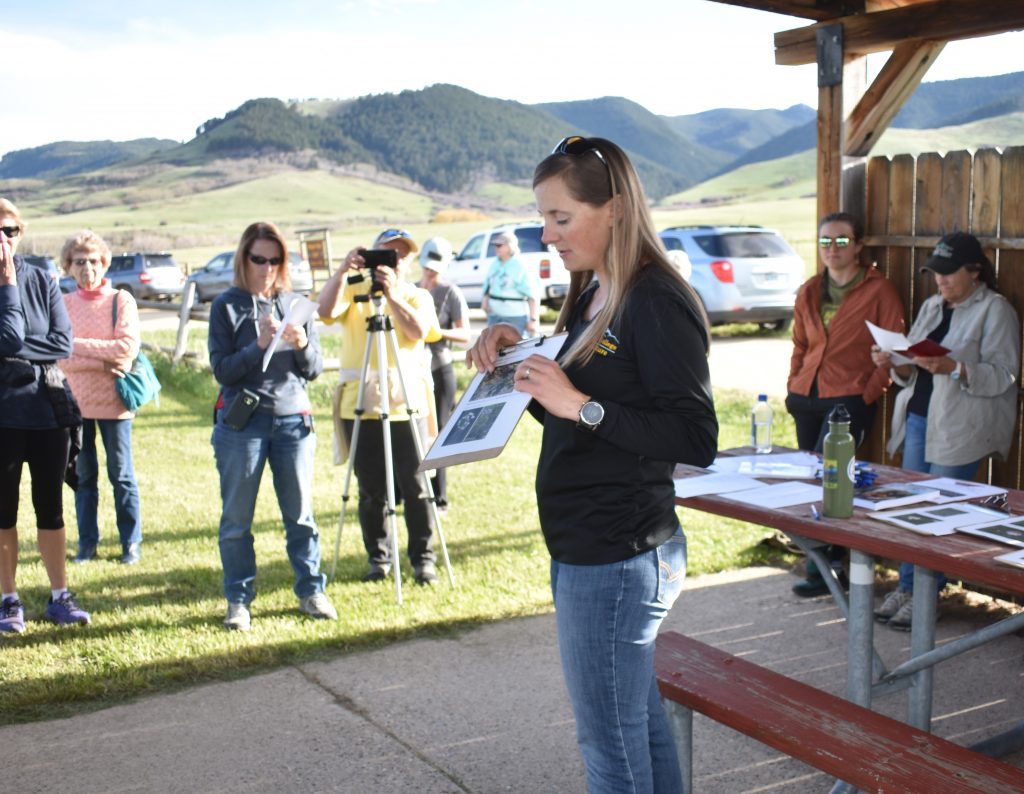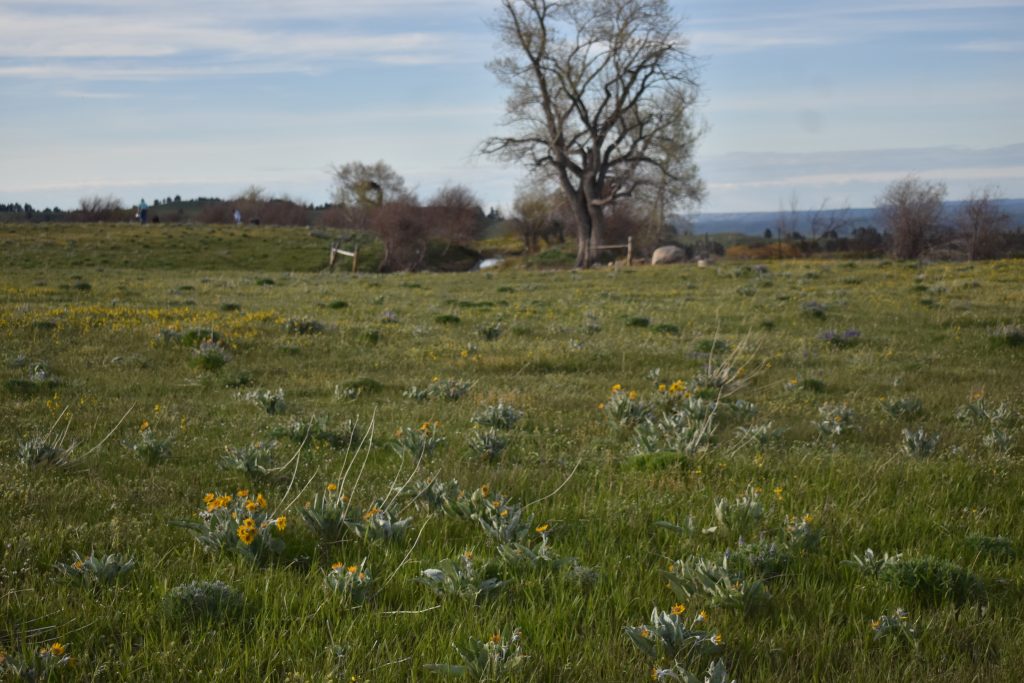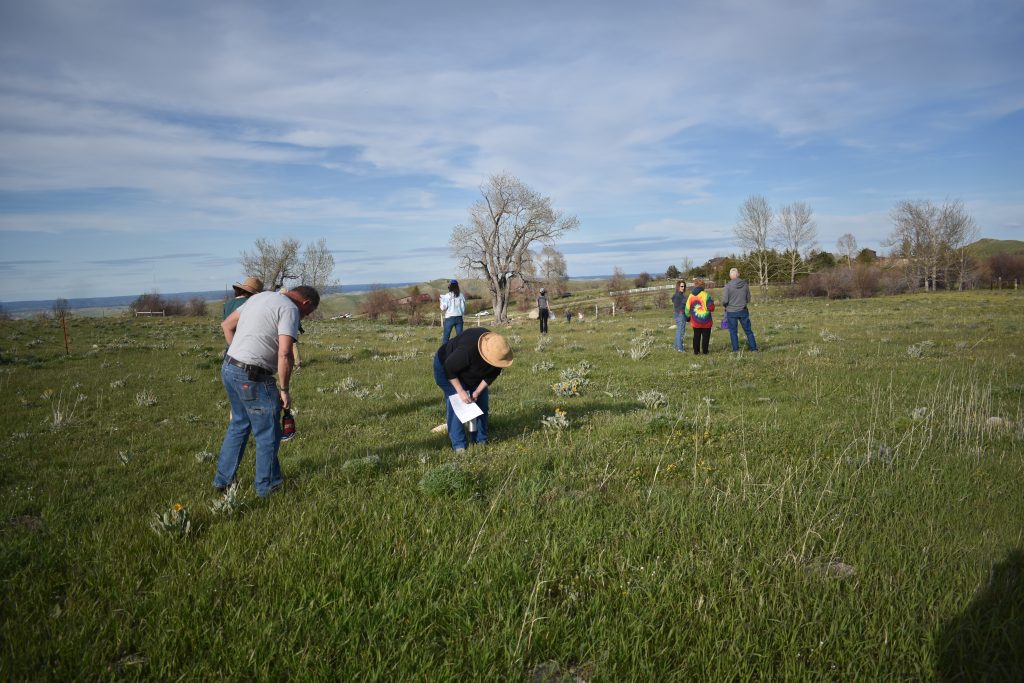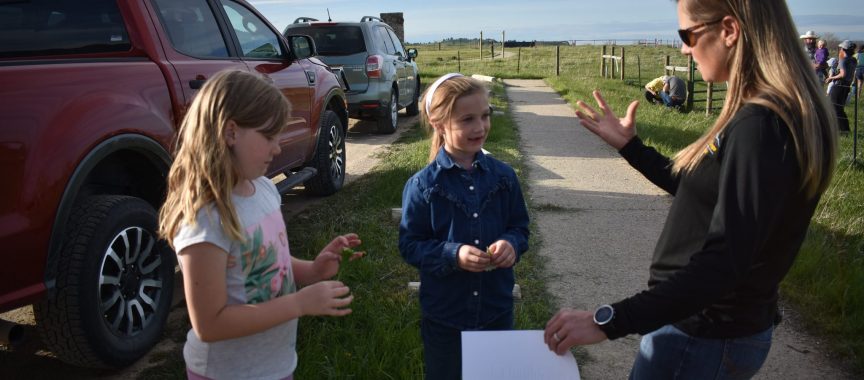By Cynthia
Cora Jean Bland and Addy Cooley discuss plants with Mae Smith
A warm day brought out around 30 people to the Native Plants talk and scavenger hunt for the plants at the Wagon Box Fight Site near Story on Wednesday evening, May 25.
Mae Smith, the Director of Agriculture and Rangeland Management instructor at Sheridan College, gave a talk and a handout with a list of 20 plants the participants could find and identify in the area around the monument.
Last year Smith said she identified 42 plant species in the area. She gave a presentation on forbes and shrubs and grasses, with several photos illustrating the various plants.
Smith also talked about the area drought, and that Sheridan County is in an extreme drought, which is likely to continue. She said that Story usually receives around 26” of rain in the month of May, and so far, this year there has only been 4.5” of recorded moisture.


She talked about the uses of the plants, wildlife graze and browse, livestock grazing and even recreation.
There are there types of plants, grasses, which have long, thin leaves, non-showy seedheads and fibrous roots. “Good for the soil, not so good for gardens,” She said.
Some grasses there are Sandberg Bluegrass, Idaho Fescue and Elk Sedge, which is a grass-like plant. Smooth Broome was introduced to the area, and Bulbous Bluegrass and Cheatgrass are considered invasive species.
Forbes have various leaf shapes, showy flowers, tap or fibrous roots and non-woody bases. Shrubs have multiple wood steams and various leaf shapes, can have showy or non-showy flowers.


Smith had a display of photos of many of the common plants that can be found in the area and described how to identify them. One plant that is very prevalent this year is purple mustard many fields are covered with it. Smith said, “The purple mustard is going crazy this year.”
She talked about some flowers that are poisonous to livestock and humans. Death Camas is one, Low Larkspur is another.
Wild Onions are an edible plant that can easily be confused with Death Camas, but:
Wild Roses are considered a shrub, and other shrubs included Western Snowberry, Hawthorn and Fringed Sagewort, which she classified as a half-shrub.


Wild roses are another plant often found at the site, and although Smith said that they are not yet in bloom, but they are there. She talked about how to identify them.
Participants then went on a scavenger hunt to see how many species they could identify.
Last modified: May 26, 2022






